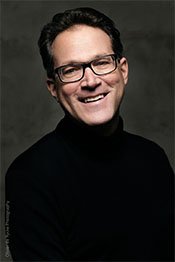
[Part 17/23 | Module 3: MASTERING THE LIGHT]
Nude outdoor photography is often considered to be more challenging because you may never have everything under control.
Outdoor Setups: Learn From My Mistakes
While shooting in studios and in other interior locations offers total or nearer-total control of your lighting, shooting outside in daylight doesn’t offer the same lighting luxuries. Lighting your model with available daylight presents unique challenges, whether you’re utilizing the daylight on its own or adding artificial light to it.
- Shooting in daylight is subject to continuous change because weather conditions and time of day (especially those times nearer to dusk or dawn) means constantly changing light.
- Changes due to latitude, location and season are also important considerations.
- Changing daylight conditions means changing colors, tones, and even shapes and forms, e.g., strong color changes may result from shooting in haze, mist, during storm conditions, or at various times of day.
- Golden Hour, that magical time of day prior to sunset, is so named because of the warm, golden-hued colors and tones it creates.
- The position of the sun also affects shapes and forms because the shadows the sun creates are always changing as the sun moves across the sky or clouds move in front of it or float away from being in front of it.
All of the aforementioned elements have a significant impact on the look, feel, and overall appearance of the photos you create. Fortunately, outdoor photography can be greatly enhanced via artificial lighting as well as through the use of reflectors, scrims, and flags. You can use most of the same lighting setups you might employ when shooting in the studio while shooting outdoors in daylight.
When shooting outdoors, however, be mindful that you cannot rely on the direct, available, and/or ambient natural light to remain the same while you’re shooting. Conditions may change rather significantly by the time you’ve set your lights when adding flash to daylight. Mother Nature is fickle and she’s not always a friend to photographers. At the very least, she isn’t reliable in a consistent sort of way.
For that reason, you need to learn to adapt quickly to changing lighting environments. Being flexible in your lighting approaches, as well as learning adaptability, will improve your outdoor photography dramatically.
Strategy 1: The Sun Is Your Key Light
Obviously, there are ways to overpower the sun with flash so that, instead of it being your key or main light source, it serves as more of a fill light or may be used as a background or separation light. In many, if not most, circumstances, however, the sun is your key light source even if it’s being utilized indirectly via reflectors.
On clear days, when the sun is directly overhead, it produces the high-noon effect. The results include dark eye shadows – not a good thing for most portraiture, nude and otherwise. It’s unflattering to your model and generally appears amateurish in photos.
For the most part, your best option is to shoot later in the afternoon or earlier in the morning when the sun is at an angle of 45 degrees or less. Terrific images can be taken during these times of day without adding artificial light or other special equipment. If you’re unable to shoot during those times of day, your best bet is to use flash or reflectors to fill the unwanted shadows. If you’re shooting on an overcast day, the time of day doesn’t matter much as the cloud cover acts like a big diffuser in the sky and the natural light will be soft and even.
Strategy 2: Use Flash As Your Key Or Main Light
Using flash (studio strobes or speedlights) as your main light can be very effective when shooting in daylight. Your flash, along with the other light present – ambient or more direct sunlight used as a back-light or in other ways for highlights – along with your flash can produce terrific photos.
When using flash in daylight, place your flash in the same sorts of positions you would when working in a studio or other interior location. You might find you’ll need to set your flash to high power output to have it compete favorably with the sunlight or ambient. At other times, for instance, when shooting with your model in the shade, your flash might be too powerful even at low power output settings. For those times, you may need to knock-down the strobe’s light with some sort of diffusion material.
Generally, you don’t want to move the light source further from your model as this will make for a smaller light source, relative to your model, and the light will be harder, more specular, and create more shadows on your model. Of course, if that’s the look you’re going for, by all means, move your flash further away.
Just as you would in the studio, umbrellas and soft-boxes are used for outdoor model photography when working with flash devices. But be aware for windy situations, as this will easily knock-over your light(s)!
Ban Shadows When Shooting In Sunlight
Bright sunlight can create harsh, unflattering shadows and over-exposed hotspots, more so when you are shooting during the middle of the day. As already mentioned, mid-day sun easily creates dark shadows around the eyes – an unflattering situation commonly called, “raccoon eyes.”
When possible, it’s often a good idea to shoot in the shade, rather than in direct sunlight. A reflector or flash will help you balance the exposure on your model with the background. Be aware that color temperature changes when shooting outside. It is not uniform. Not only does it change at various times during the day depending on the position of the sun, but the color temperature in shade, for example, is bluer than in open sunlight.
Learn to use your camera’s White Balance settings. When you move your model from open sunlight into the shade, it’s a good idea to re-set the White Balance so that you are capturing images with the correct color temperature. Your camera also has pre-set settings depending on the type of daylight you’re shooting in. Those settings aren’t exact but they’re generally quite close to being exact and proper settings for use. Since you are supposed to shoot in RAW file format anyway, color temperature can be easily adjusted in post-production.
Lighting For The Eyes: It’s Just As Important As It Is In for Indoor Photography
Just as it is for indoor photography, the eyes have it. Have what? That thing that draws viewers in and expresses so much emotion. Catchlights in the eyes are as important when shooting outdoors as when shooting indoors. Your model photos, nude and otherwise, should feature sparkling eyes.
Eyes with catch-lights are alive! Eyes without them appear lackluster.
Catchlights in the eyes are indicators of the placement of your main light. When adjusting your main light, be careful not to lose the catch-lights you’ve already created with your light. There is no absolute correct placement for catch-lights in the eyes but it’s always a good idea to try to create a well-defined reflection in the upper half of the model’s eyes. The sparkle should be located in the pupil, i.e., the colored part of the eye and not in the white sections of the eyes.
Disc Reflectors
Disk reflectors are inexpensive and can be life-savers when shooting in daylight. Reflectors can be used to reflect sunlight or the light created artificially by flash.
Collapsible disc reflectors are generally preferred because they can be folded and packed without taking up much space. They are capable of bouncing-in small amounts of light as well as much larger amounts depending on the size of the reflector. Reflectors are often the perfect tool for filling shadows on a model’s face. They can also be used to create catchlights. If you find you cannot use the reflector effectively for a variety of reasons, it’s likely best to employ flash.
Many of the disk reflectors you can purchase have multiple coatings. These include white, silver, gold, black, and diffusion which allow some light to pass through. Some reflectors have multiple coatings on the same side, for instance, gold and silver or silver and white. Each creates a slightly different lighting quality.
Light Panels: California Sunbounce, Westcott Scrim Jim, And Others
Light panels are very helpful tools for shooting in daylight. They are much like a disc reflector but bigger. Most of them utilize various fabrics that can be stretched across their frames. Light panels can act as big reflectors or large scrims (to knock-down the light.)
You can even create your own panels by making PVC frames and using things like white sheets or white plastic shower curtains. DIY light panels are an inexpensive solution.
Or, you can rely on manufactured products like those provided by California Sunbounce and Westcott’s Scrim Jim. When purchasing, you can choose from diffusion or reflecting material in silver, white, black, gold and others.
Outdoor Nude Model Shoots: A List Of Helpful Equipment
- Light Stand(s) or Regular Tripod
- Speedlight or Studio Strobe with Portable Power
- Light Modifiers (Umbrella, Standard Reflector)
- Disc Reflector and/or Light Panel
- Telephoto Lens (Often preferred because of its ability to shoot with less depth of field and to create bokeh, i.e., aesthetically pleasing blurred backgrounds)
- Tripod (Because you never know when it may come in handy)
- ND filters (Optional for reducing exposure as needed)
Thanks for reading.
Author: Dan Hostettler 

A traveler at heart, inspired by women, working along Swiss precision.
Dan is a mediapreneur, photographer, author of several books, owner of StudioPrague and Founder + Editor in Chief of SexyWomenPhotography.com. Being a successful photographer for more than 15 years Dan got internationally published and featured on/in GQ Online, The India Times, FashionONE TV, FotoTV, GoodLight Mag, amongst many others.
Dan is currently residing and working in Prague, CZ, conducting nude photography workshops, productions and pushing educational formats to a new level.
Consider a Small Donation?
Your donation helps to sustain, create and regularly update the free content for you.
I love offering my knowledge to you and a small token of appreciation helps to keep the lights on.
Thank You!
Consider a Small Donation?
Your donation helps to sustain, create and regularly update the free content for you.
I love offering my knowledge to you and a small token of appreciation helps to keep the lights on.
Thank You!









